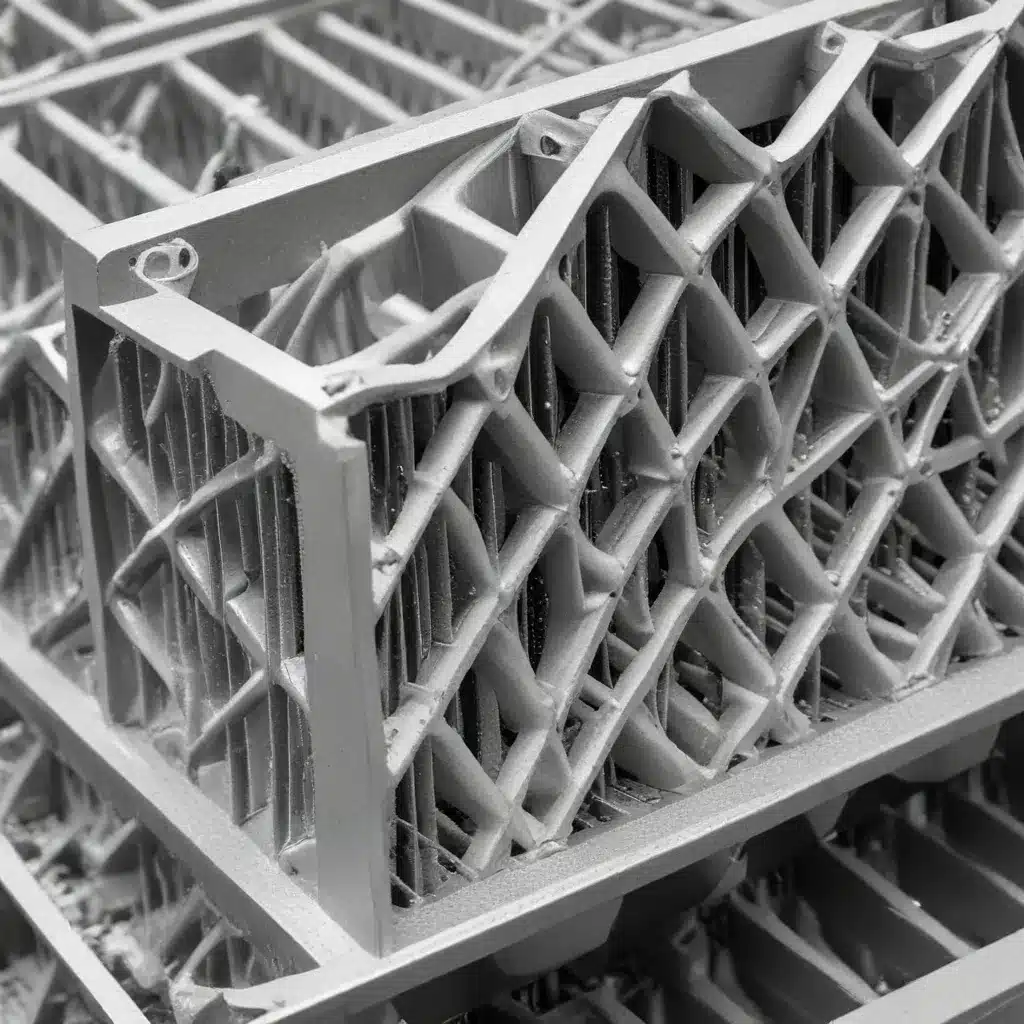
In the rapidly evolving world of thermal management, the air-cooled heat exchanger stands as a cornerstone technology, enabling efficient heat dissipation across a wide range of industries. As the demand for sustainable and energy-efficient cooling solutions grows, researchers and engineers have turned their attention to the potential of additive manufacturing (AM) to revolutionize the design and performance of these critical components.
The Promise of Additive Manufacturing
Additive manufacturing, also known as 3D printing, has emerged as a transformative technology in the world of engineering and design. By allowing for unprecedented design freedom and customization, AM presents a unique opportunity to rethink the traditional approach to air-cooled heat exchanger development.
One of the key advantages of additive manufacturing lies in its ability to create complex, intricate geometries that were previously impossible or prohibitively expensive to produce using conventional manufacturing methods. This design flexibility enables the creation of heat transfer surfaces with intricate features, such as enhanced fin structures, turbulators, and complex flow channels, all of which can contribute to significant improvements in heat transfer performance.
Enhancing Heat Transfer through Additive Manufacturing
The University of Maryland, led by Professor Michael Ohadi, has been at the forefront of exploring the potential of additive manufacturing for air-cooled heat exchangers. With the support of the Advanced Research Projects Agency-Energy (ARPA-E), the research team is working to develop next-generation heat exchangers that can operate in dry or hybrid modes, substantially reducing or even eliminating the need for cooling water in steam electric generation plants.
One of the key focus areas of this research is the use of additive manufacturing to create advanced heat transfer surfaces. By leveraging the design freedom offered by AM, the team is exploring the incorporation of complex geometries and features that can enhance air-side heat transfer, such as:
-
Customized Fin Structures: Additive manufacturing allows for the design and fabrication of fins with intricate shapes, including wavy, louvered, or perforated patterns. These specialized fin designs can significantly improve heat transfer performance by increasing the surface area and disrupting the boundary layer, leading to enhanced convective heat transfer.
-
Integrated Turbulators: AM enables the integration of turbulence-generating features, such as vortex generators or flow-disrupting elements, directly into the heat exchanger design. These features can promote greater air mixing and increase the overall heat transfer coefficient, further improving the efficiency of the air-cooled heat exchanger.
-
Hierarchical Structures: Additive manufacturing enables the creation of heat transfer surfaces with multi-scale features, incorporating both micro- and macro-scale structures. This hierarchical approach can lead to a synergistic enhancement of heat transfer by combining the benefits of increased surface area and improved boundary layer disruption.
Tailoring Materials for Additive Manufacturing
In addition to the design innovations, the selection of materials for additive manufacturing of air-cooled heat exchangers is also a critical consideration. Researchers at the University of Wisconsin-Madison, through their ARPA-E project, have been exploring the use of polymer-based materials reinforced with conductive fillers to create high-performance, cost-effective heat exchanger components.
By incorporating materials such as copper, carbon fiber, graphite, or aluminum into a polymer matrix, the team has been able to develop filaments suitable for fused filament fabrication (FFF) 3D printing. These composite materials not only offer improved thermal conductivity compared to traditional polymers but also maintain the necessary mechanical properties to withstand the operating conditions of air-cooled heat exchangers.
Through the optimization of material formulations and 3D printing parameters, the researchers aim to produce competitive and effective plastic heat exchangers that can rival the performance of their metal counterparts, while providing the added benefits of lower cost and reduced manufacturing complexity.
Computational Fluid Dynamics for Design Optimization
The design and optimization of air-cooled heat exchangers with enhanced heat transfer surfaces require a deep understanding of the underlying fluid dynamics and heat transfer mechanisms. To this end, computational fluid dynamics (CFD) has become an invaluable tool in the development of these advanced heat exchangers.
By using CFD simulations, researchers can model the air flows over the intricate heat transfer surfaces, gaining insights into the relationship between the surface geometry and the overall heat transfer performance. This knowledge can then be used to further optimize the design, striking the right balance between heat transfer enhancement and other factors, such as pressure drop and fan power requirements.
The integration of CFD with additive manufacturing enables an iterative design process, where computational models can guide the creation of innovative heat exchanger geometries, which can then be rapidly prototyped and tested. This synergistic approach allows for the development of highly customized and optimized air-cooled heat exchangers that push the boundaries of thermal management capabilities.
Overcoming Challenges and Realizing the Potential
The journey towards realizing the full potential of additive manufacturing for air-cooled heat exchangers is not without its challenges. Material limitations, manufacturing constraints, and the need for rigorous performance validation are just a few of the hurdles that researchers and engineers must overcome.
However, the collaborative efforts of leading institutions, such as the University of Maryland and the University of Wisconsin-Madison, along with industry partners like Boeing, Honeywell, and Trane, have laid the foundation for continued advancements in this field. By leveraging the latest developments in heat transfer surface enhancement, flow management, and additive manufacturing techniques, the industry is poised to witness a revolutionary leap in the design and performance of air-cooled heat exchangers.
As the Air Cooled Heat Exchangers blog, we are excited to follow the progress and insights generated by these pioneering research projects. The ability to create custom, high-performance heat exchangers through additive manufacturing holds immense potential for transforming thermal management solutions across a wide range of industries, from power generation to HVAC systems and beyond.
Stay tuned for more updates and in-depth analysis on the cutting edge of air-cooled heat exchanger technology.

